![]()
![]()
![]()
Use LEFT and RIGHT arrow keys to navigate between flashcards;
Use UP and DOWN arrow keys to flip the card;
H to show hint;
A reads text to speech;
19 Cards in this Set
- Front
- Back

|
Couples Sarcophagus - Etruscan Era
|
|
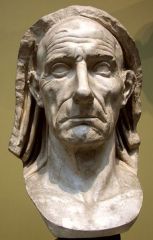
|
Bust of an Old Man - Republican Era - Veristic - lack of variety in therepresentation of emotional state. Appears grave, stern and grim |
|

|
Patrician Carrying Busts - Augustan and Republican Era - Veristic |
|
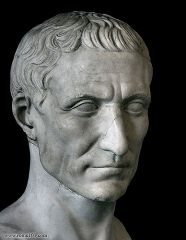
|
Julius Caesar - Republican Era - Veristic |
|
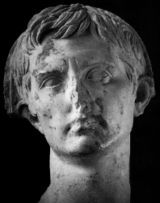
|
Young Octavian (Augustus) - Republican Era - Veristic - emotional and animated portrait, which revealed the ambition of the young man, |
|
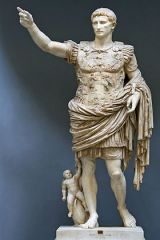
|
Prima Porta Augustus - Early Imperial/Augustan Era - Idealism - most famous representation of Augustus, shows him as a general addressing his troops in a commanding gesture symbolic of his power. - eternal youthfulness, ordered hair and smoothed out face show that this is more of a “role portrait". |
|
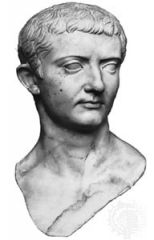
|
Tiberius - Imperial/Julio-Claudian Era - Idealism |
|
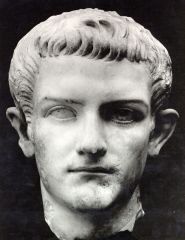
|
Caligula - Imperial/Julio-Claudian Era - Idealism. - imitated theyouthful portraits of Augustus. - although literarysources clearly refer to his balding state, in his portraits he is shown with afull cap of hair. |
|
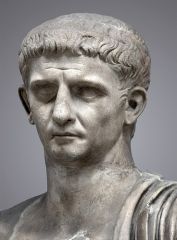
|
Claudius - Imperial/Julio-Claudian Era - Idealism w/ some Verism - face displays a thoughtful concentration and the realistic effectsof ageing. |
|
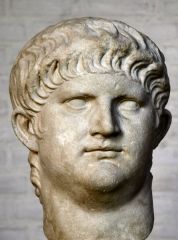
|
Nero - Imperial/Julio-Claudian Era - Idealism - round, fleshy face, small deeply set eyes, thick neck and full hair with increased textural contrast, brushed in parallel comma-like curls to the left - recalled Alexander the Great's mane-like hair. - In later portraits a brutal expression clearly comes through. |
|
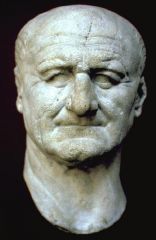
|
Vespasian - Imperial/Flavian Era - Veristic |
|
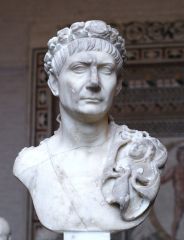
|
Trajan - Imperial Era - Idealism w/ aging and Verism. - emulated Augustus in his portraits; this is evident especially in his hairstyle with long strands of hair brushed to the left or right over a low forehead |
|
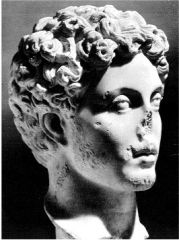
|
Young Marcus Aurelius - Imperial/Antonine Era - Idealism |
|
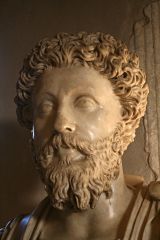
|
Mature Marcus Aurelius - Imperial/Antonine Era - Idealism |
|
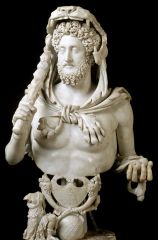
|
Commodus as Hercules - Imperial/Antonine Era - Idealism. |
|
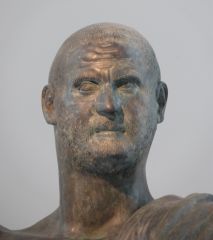
|
Trebonianus Gallus - Late Imperial/Soldier Emperors - Idealism - pompous and graceless expression, |
|
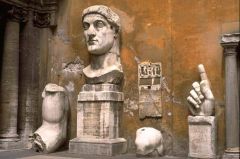
|
Colossal Constantine - Imperial Era - Idealism - Constantine was represented as a pagan Jupiter, distant and unapproachable. |
|
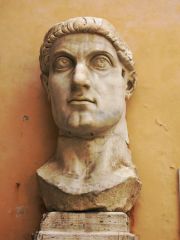
|
Detail of Colossal Constantine Head - Imperial Era - Idealism. - youthful face dominated by large incised eyes, while the hair over the forehead forms an arc. |
|
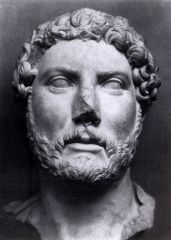
|
Hadrian - Imperial Era - Idealism |

